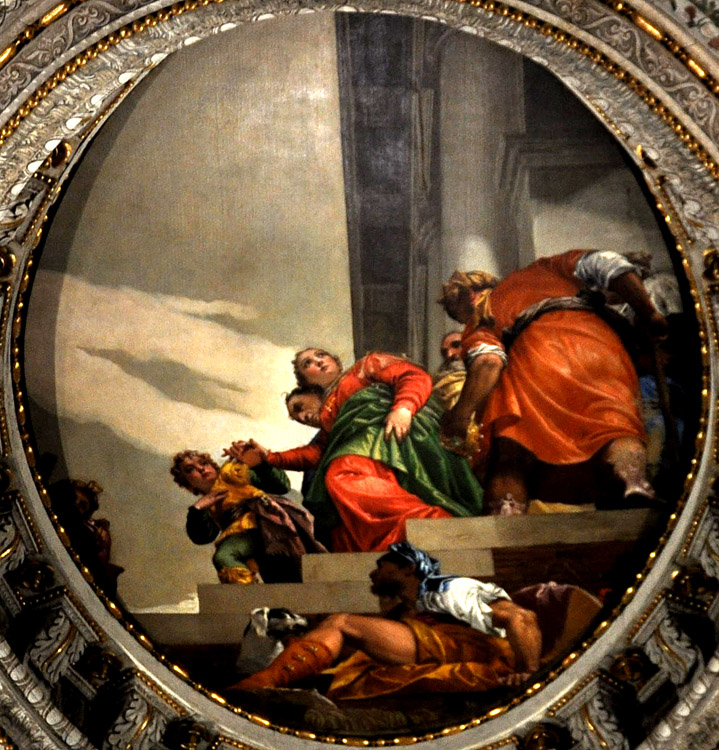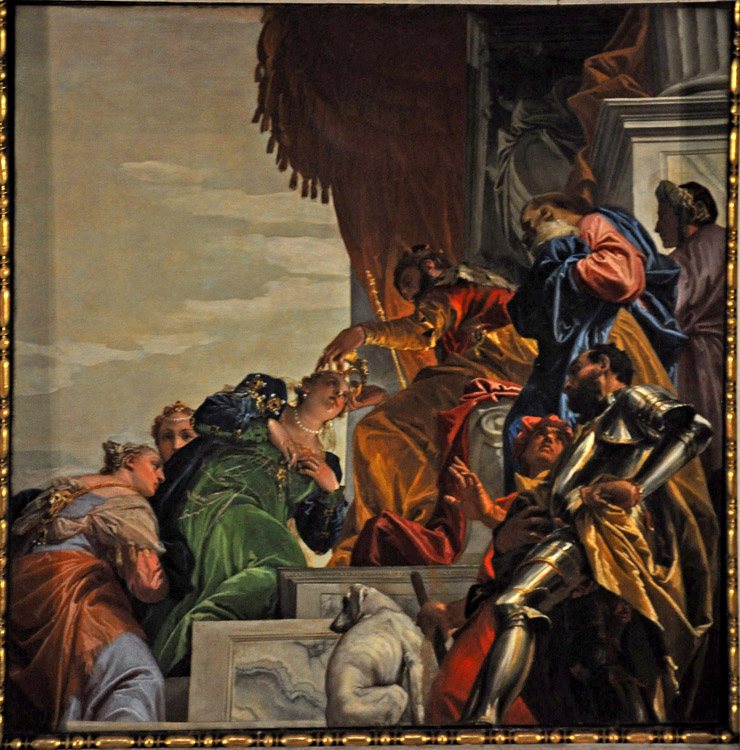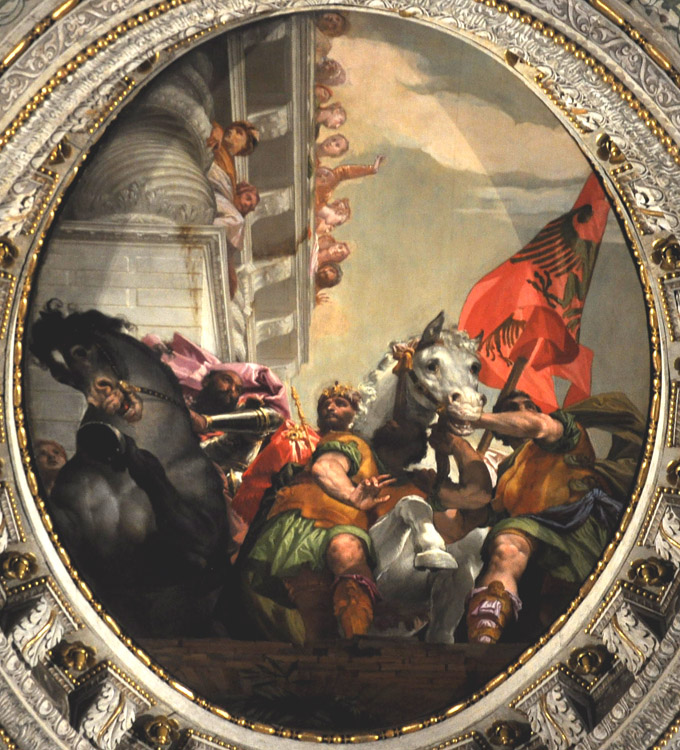Paolo Veronese, The Esther Cycle at San Sebastian, Venice
1556. Oil on canvas. Church of St. Sebastian, Venice, Italy
The ceiling of the nave at San Sebastian features three grand paintings based on the Book of Esther. In the story, Esther's uncle Mordecai arranges for King Ahasuerus meet Esther and make her his queen to replace Vasthi, who had refused the king's invitation to a feast. Later a courtier named Haman plots to have Mordecai and all the Jews killed, but Esther intercedes with the king and saves her people.
Medieval exegesis saw Esther and Vasthi as types of
Ecclesia
Latin for "the Church"
and Synagoga. Ecclesia intercedes with God for mankind and is our rightful queen, whereas Synagoga refused the teaching of the apostles and so was dismissed by God. In this allegorical reading, Mordecai and Haman represent St. Peter and Nero, the emperor who had Peter killed, as well as all good pastors generally and all iniquitous schemers. Medieval artists often picture Ecclesia in a crown while Synagoga stands either bareheaded or with her crown falling from her head
(example). In Crucifixion images Ecclesia may be seen entering the scene while Synagoga leaves
(example).
The first two paintings in the cycle explore several important contrasts between Esther and Vasthi:


On the left, Vasthi descends a plain stairway. The man in red has taken her crown. On the right, Esther faces in the opposite direction on an elegant marble staircase as Ahasuerus places the crown on her head. She is attended by two beautiful young women whom the church's guide book says are Chastity and Humility. In his black armor Haman stands proudly in the foreground, contrasting with the fallen man in the foreground of the Vasthi painting. (The guide book interprets the latter as fallen Pride and the youth on Vasthi's right as Ignorance.)
Finally, the triumph of the Church over Nero and all he represents is expressed in the third painting:

To Haman's dismay, Ahasuerus tells him to arrange a triumphal procession for Mordecai. Here we see him on the left riding his black horse in his black armor while the king's "princes and nobles" lead Mordecai's white horse. Mordecai wears the king's own crown, making him an alternative figure of the triumphant Church.
View The Crowning of Esther, The Repudiation of Vasthi, and The Triumph of Mordecai in full resolution.
Read more about images of Esther.
Read more about Ecclesia: The Church
Paintings photographed at the site by Richard Stracke, shared under Attribution-NonCommercial-ShareAlike license.
1 Glossa Ordinaria, II, 1615-28.


